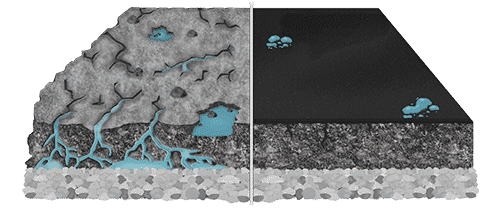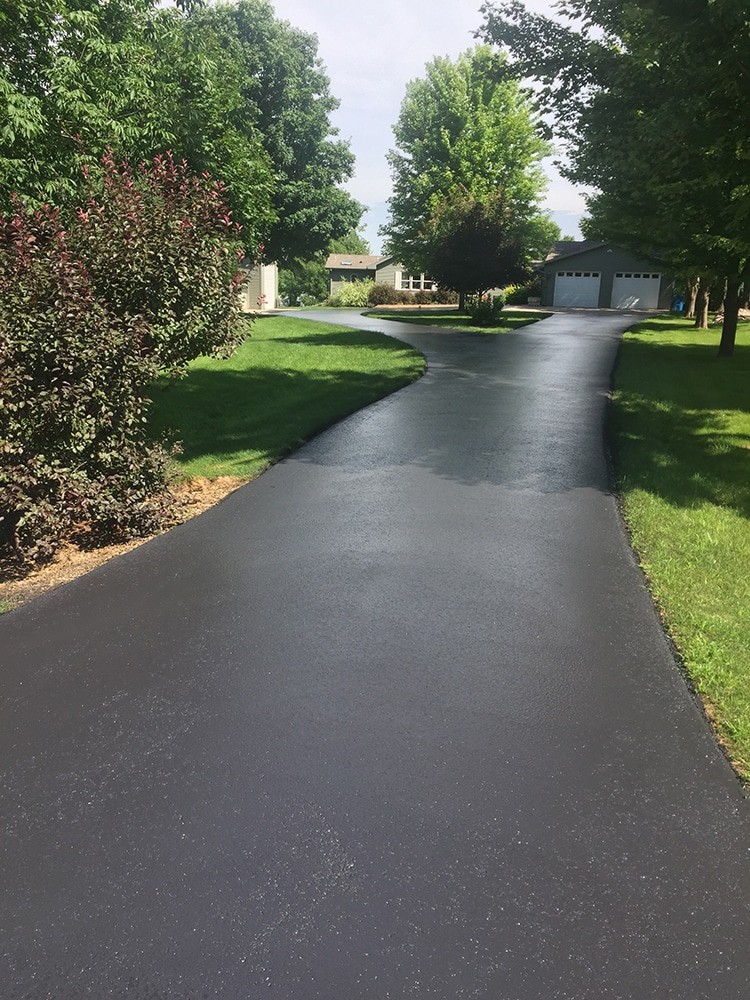What Is Sealcoating?
Sealcoating is a liquid applied over asphalt cement to help keep it intact and protect against general wear and tear. This coating will reflect sunlight and allow moisture to drain away, which also protects asphalt from premature damage. Asphalt paving is made of many small particles held together with a binding agent. In order to help your paving last, it’s crucial to keep that binding strong for the life of your driveway or asphalt surface.
The purpose of asphalt sealcoating is to protect the asphalt pavement and to beautify at the same time. The earlier an asphalt sealer can be applied in the life cycle of asphalt the better.
Unsealed vs. Sealed


Why is it needed?
- Automotive fluids are very corrosive to the asphalt cement or binder that keeps this material intact. The more oil that drips onto asphalt, the more potholes, spalling, and other damage it will suffer.
- Asphalt binders will break down naturally with age.
- Long-term exposure to hot summertime sun will break down asphalt binders while also causing the surface of the material to become brittle and fragile.
- Heavy vehicles can put undue stress on asphalt, breaking its binders and causing it to soften.
- Excess moisture can break down the binders of asphalt and also loosen the aggregate used to make the material.
- And just as important, sealcoating beautifies pavement; enhancing the image and curb appeal of commercial properties, home driveways, roadways and more.
When And How Often Should I sealcoat?
We recommend allowing it to cure for 4-6 months before applying the first coat of seal. For smaller asphalt patching projects we recommend 45-60 days.
For preventative maintenance, South Central Sealcoat recommends sealing your parking lot once every 2 years or as necessary. This will greatly expand the lifespan of your paved parking lot.
To reduce the effects of the above-mentioned elements, it is important to implement a maintenance program that utilizes sealcoating to extend the life of your parking lot or driveway. Left untreated, asphalt pavement will deteriorate rapidly. The asphalt binder (glue) that holds the pavement together begins to oxidize and weather soon after installation. Moisture penetrates the asphalt, causing damage and deterioration to the pavement. Oil, gas, and salt cause further damage to the pavement surface. This is why asphalt goes from a newly laid fresh black appearance to a aged, oxidized gray appearance.

